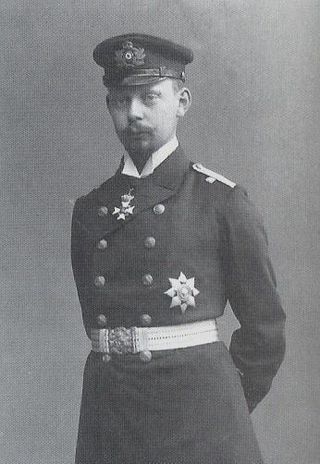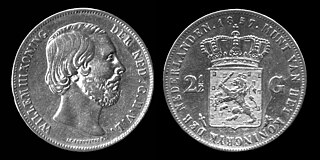
The Salic law, also called the Salian law, was the ancient Frankish civil law code compiled around AD 500 by the first Frankish King, Clovis. The written text is in Late Latin and contains some of the earliest known instances of Old Dutch. It remained the basis of Frankish law throughout the early Medieval period, and influenced future European legal systems. The best-known tenet of the old law is the principle of exclusion of women from inheritance of thrones, fiefs, and other property. The Salic laws were arbitrated by a committee appointed and empowered by the King of the Franks. Dozens of manuscripts dating from the sixth to eighth centuries and three emendations as late as the ninth century have survived.
Primogeniture is the right, by law or custom, of the firstborn legitimate child to inherit the parent's entire or main estate in preference to shared inheritance among all or some children, any illegitimate child or any collateral relative. In most contexts, it means the inheritance of the firstborn son ; it can also mean by the firstborn daughter, or firstborn child.

A dynasty is a sequence of rulers from the same family, usually in the context of a monarchical system, but sometimes also appearing in republics. A dynasty may also be referred to as a "house", "family" or "clan", among others.
An heir apparent is a person who is first in an order of succession and cannot be displaced from inheriting by the birth of another person. A person who is first in the current order of succession but could be displaced by the birth of a more eligible heir is known as heir presumptive.

A crown prince or hereditary prince is the heir apparent to the throne in a royal or imperial monarchy. The female form of the title, crown princess, is held by a woman who is heir apparent or is married to the heir apparent.

Since 1983, the crown of the Netherlands passes according to absolute primogeniture. From 1814 until 1887, a monarch could only be succeeded by their closest female relative if there were no eligible male relatives. Male-preference cognatic primogeniture was adopted in 1887, though abolished when absolute primogeniture was introduced in 1983. Proximity of blood has been taken into consideration since 1922, when the constitution was changed to limit the line of succession to three degrees of kinship from the current monarch. In a situation where the monarch is succeeded by an eligible aunt or uncle, persons previously excluded could be reintroduced into the line of succession.

Succession to the British throne is determined by descent, sex, legitimacy, and religion. Under common law, the Crown is inherited by a sovereign's children or by a childless sovereign's nearest collateral line. The Bill of Rights 1689 and the Act of Settlement 1701 restrict succession to the throne to the legitimate Protestant descendants of Sophia of Hanover who are in "communion with the Church of England". Spouses of Catholics were disqualified from 1689 until the law was amended in 2015. Protestant descendants of those excluded for being Roman Catholics are eligible.

A queen regnant is a female monarch, equivalent in rank, title and position to a king. She reigns suo jure over a realm known as a kingdom; as opposed to a queen consort, who is married to a reigning king; or a queen regent, who is the guardian of a child monarch and rules pro tempore in the child's stead or instead of her husband who is absent from the realm, be it de jure in sharing power or de facto in ruling alone. A queen regnant is sometimes called a woman king. A princess, duchess, or grand duchess regnant is a female monarch who reigns suo jure over a principality or (grand) duchy; an empress regnant is a female monarch who reigns suo jure over an empire.

The Danish royal family is the dynastic family of the monarch of Denmark. While some members of the Danish royal family hold the title of Prince(ss) of Denmark, descendants of Margrethe II additionally bear the title Count(ess) of Monpezat. Children of the monarch are accorded the style of His/Her Royal Highness. The King and Queen are styled Majesty.
In the Kingdom of the Netherlands, the monarchy of the Netherlands is a constitutional office and is controlled by the Constitution of the Netherlands. A distinction is made between members of the royal family and members of the royal house.

The Palace Law of Succession, Buddhist Era 2467 (1924) governs succession to the Throne of the Kingdom of Thailand, under the ruling House of Chakri. Succession matters prior to the end of absolute monarchy in 1932 could be contentious, especially during the Ayutthaya period from the 14th to 18th centuries. In 1924, King Vajiravudh attempted to clarify the succession process by laying down the Palace Law of Succession. It was promulgated and came into effect in November 1924 as, in part, an attempt to eliminate the vagueness relating to succession within the Thai monarchical regime and to systematically resolve previous controversies. In 1932, after Siam became a constitutional monarchy, various amendments relating to succession were introduced. The 1997 Constitution of Thailand relied on the law with regards to succession, but the 2006 Interim Constitution made no mention of succession, leaving it to "constitutional practice". The 2007 Constitution again relied on the Palace Law. The preamble of the 2014 interim constitution of Thailand abrogated the 2007 Constitution, with the exception of chapter 2, concerning the monarchy and the succession.
An order, line or right of succession is the line of individuals necessitated to hold a high office when it becomes vacated, such as head of state or an honour such as a title of nobility. This sequence may be regulated through descent or by statute.

The monarchy of Denmark is a constitutional institution and a historic office of the Kingdom of Denmark. The Kingdom includes Denmark proper and the autonomous territories of the Faroe Islands and Greenland. The Kingdom of Denmark was already consolidated in the 8th century, whose rulers are consistently referred to in Frankish sources as "kings". Under the rule of King Gudfred in 804 the Kingdom may have included all the major provinces of medieval Denmark.

The monarchy of the Netherlands is governed by the country's constitution, roughly a third of which explains the mechanics of succession, accession, and abdication; the roles and duties of the monarch; the formalities of communication between the States General of the Netherlands; and the monarch's role in creating laws.

Princess Marie Alexandrine of Saxe-Weimar-Eisenach was the eldest daughter and second child of Charles Alexander, Grand Duke of Saxe-Weimar-Eisenach and his wife Princess Sophie of the Netherlands.

Prince Heinrich XXXII Reuss of Köstritz was the eldest surviving son of Prince Heinrich VII Reuss of Köstritz and his wife, Princess Marie Alexandrine of Saxe-Weimar-Eisenach.

The style of the Dutch sovereign has changed many times since the establishment of the Kingdom of the Netherlands due to formations and dissolutions of personal unions, as well as due to marriages of female sovereigns and cognatic successions.












